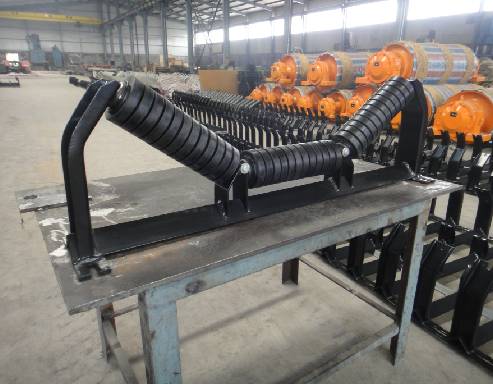 Afrikaans
Afrikaans  Albanian
Albanian  Amharic
Amharic  Arabic
Arabic  Armenian
Armenian  Azerbaijani
Azerbaijani  Basque
Basque  Belarusian
Belarusian  Bengali
Bengali  Bosnian
Bosnian  Bulgarian
Bulgarian  Catalan
Catalan  Cebuano
Cebuano  Corsican
Corsican  Croatian
Croatian  Czech
Czech  Danish
Danish  Dutch
Dutch  English
English  Esperanto
Esperanto  Estonian
Estonian  Finnish
Finnish  French
French  Frisian
Frisian  Galician
Galician  Georgian
Georgian  German
German  Greek
Greek  Gujarati
Gujarati  Haitian Creole
Haitian Creole  hausa
hausa  hawaiian
hawaiian  Hebrew
Hebrew  Hindi
Hindi  Miao
Miao  Hungarian
Hungarian  Icelandic
Icelandic  igbo
igbo  Indonesian
Indonesian  irish
irish  Italian
Italian  Japanese
Japanese  Javanese
Javanese  Kannada
Kannada  kazakh
kazakh  Khmer
Khmer  Rwandese
Rwandese  Korean
Korean  Kurdish
Kurdish  Kyrgyz
Kyrgyz  Lao
Lao  Latin
Latin  Latvian
Latvian  Lithuanian
Lithuanian  Luxembourgish
Luxembourgish  Macedonian
Macedonian  Malgashi
Malgashi  Malay
Malay  Malayalam
Malayalam  Maltese
Maltese  Maori
Maori  Marathi
Marathi  Mongolian
Mongolian  Myanmar
Myanmar  Nepali
Nepali  Norwegian
Norwegian  Norwegian
Norwegian  Occitan
Occitan  Pashto
Pashto  Persian
Persian  Polish
Polish  Portuguese
Portuguese  Punjabi
Punjabi  Romanian
Romanian  Russian
Russian  Samoan
Samoan  Scottish Gaelic
Scottish Gaelic  Serbian
Serbian  Sesotho
Sesotho  Shona
Shona  Sindhi
Sindhi  Sinhala
Sinhala  Slovak
Slovak  Slovenian
Slovenian  Somali
Somali  Spanish
Spanish  Sundanese
Sundanese  Swahili
Swahili  Swedish
Swedish  Tagalog
Tagalog  Tajik
Tajik  Tamil
Tamil  Tatar
Tatar  Telugu
Telugu  Thai
Thai  Turkish
Turkish  Turkmen
Turkmen  Ukrainian
Ukrainian  Urdu
Urdu  Uighur
Uighur  Uzbek
Uzbek  Vietnamese
Vietnamese  Welsh
Welsh  Bantu
Bantu  Yiddish
Yiddish  Yoruba
Yoruba  Zulu
Zulu ceramic lagging conveyor pulley
The Advantages of Ceramic Lagging on Conveyor Pulleys
In the realm of industrial operations, conveyor systems play a pivotal role in the efficient movement of materials. One often-overlooked component of these systems is the conveyor pulley, which serves as a critical element in controlling the movement of the conveyor belt. A significant advancement in enhancing the performance of conveyor pulleys is the application of ceramic lagging. This innovative technology has brought numerous benefits to industries that rely on conveyor systems, particularly in terms of friction increase, wear resistance, and overall longevity.
The Advantages of Ceramic Lagging on Conveyor Pulleys
Another significant advantage of ceramic lagging is its exceptional wear resistance. Traditional rubber lagging can suffer from abrasion and deterioration, especially in harsh environments or when handling abrasive materials, such as sand, gravel, or minerals. In contrast, ceramic materials boast a higher hardness and resilience against wear, enabling them to withstand the rigors of demanding applications. This longevity means less frequent replacements and reduced downtime, translating to cost savings for businesses over time.
ceramic lagging conveyor pulley

In addition to wear resistance, ceramic lagging also proves advantageous in terms of temperature handling. Many industries operate under extreme conditions, where high temperatures can affect the performance of conveyor components. Ceramic lagging is engineered to withstand high heat, ensuring that pulleys maintain their integrity and effectiveness even in challenging environments. This resilience to temperature change further enhances the reliability of the conveyor system, allowing for continuous operation without the risk of failure.
Moreover, the installation of ceramic lagging can lead to a decrease in noise levels during operation. The rugged surface of ceramic materials can dampen vibrations and reduce noise that typically occurs from belt movement. This is particularly important in industries where noise regulations must be adhered to or where a quieter working environment is preferred for employee comfort.
It is also important to consider the environmental impact of materials used in industrial applications. Ceramic materials used in lagging are often chosen for their durability and lower environmental footprint compared to synthetic alternatives. By opting for ceramic lagging, companies not only enhance performance but also contribute to more sustainable industrial practices.
In conclusion, ceramic lagging for conveyor pulleys offers a multitude of benefits that can significantly improve the efficiency, reliability, and lifespan of conveyor systems. From enhanced traction and wear resistance to superior temperature handling and reduced noise, the advantages of this technology are compelling. As industries continue to evolve and seek ways to optimize their operations, the adoption of ceramic lagging technology is likely to become more prevalent, setting a new standard in conveyor system performance.
-
Revolutionizing Conveyor Reliability with Advanced Rubber Lagging PulleysNewsJul.22,2025
-
Powering Precision and Durability with Expert Manufacturers of Conveyor ComponentsNewsJul.22,2025
-
Optimizing Conveyor Systems with Advanced Conveyor AccessoriesNewsJul.22,2025
-
Maximize Conveyor Efficiency with Quality Conveyor Idler PulleysNewsJul.22,2025
-
Future-Proof Your Conveyor System with High-Performance Polyurethane RollerNewsJul.22,2025
-
Driving Efficiency Forward with Quality Idlers and RollersNewsJul.22,2025





























